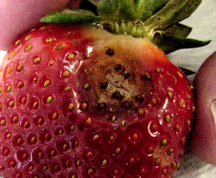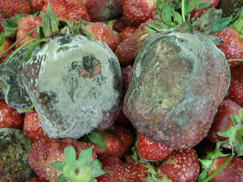All NJ licensed pesticide applicators, as well as dealers, who store pesticides are required by law to send a copy of their storage inventories with an explanatory cover letter to the local fire company by May 1st each year. [Read more…]
Archives for April 2013
Stinger Labeled for Blueberries
Stinger has been labeled for weed control in stone fruit orchards, including peaches, nectarines, apricots, plums, and cherries. The weeds controlled fall into two botanical plant families, composites and legumes. Common composite weeds found in our orchards include Canada thistle and other thistles, goldenrod species, aster species, common dandelion, mugwort (wild chrysanthemum), horseweed (marestail or stickweed), and ragweed species. Legume weeds include vetch species and clover species. [Read more…]
Vegetable Disease Update 4-19-13
- Cole crops
- Spinach
- Strawberry
- Keep in mind these disease tracking sites:
- Late blight http://usablight.org/
- Cucurbit downy mildew http://cdm.ipmpipe.org/
Vegetable Diseases of the Week 4-19-13
Early Season Pythium & Phytophthora Control in Pepper and Tomato
With the relatively dry spring we’ve had thus far, it’s easy to forget about Pythium and Phytophthora! The same question always comes up about this time of year when growers begin to start thinking about transplanting their tomato and pepper crops. “What should I do to help prevent Pythium and Phytophthora?”
In years past, the answer was simple, apply mefenoxam (Ridomil Gold SL, Ultra Flourish, 4) or metalaxyl (MetaStar, 4). Problem solved, right? In the past, that answer was right, but with resistance development in Phytophthora (P. capsici) to both mefenoxam and metalaxyl, the correct answer isn’t so simple anymore. [Read more…]
A Comment About Reflex Herbicide
From Weekly Crop Update
Mark VanGessel, Extension Weed Specialist; mjv@udel.edu
All winter I have been talking about Reflex as a tool for managing Palmer amaranth and other problem weeds. Farm articles from the southern US often discuss this product as well. It is commonly used for snap beans and soybeans. But it is one of those products with unique regional restrictions. On Delmarva, we are limited to one application every two years, and a maximum use of 1.5 pts. South into the Carolinas and Georgia, they can use higher rates and use it every year. North of Delaware (Pennsylvania and New Jersey) it is limited to one application in alternate years with a maximum use rate of 1.25 pts. So be sure to plan your herbicide rotation accordingly.
Source: Weekly Crop Update



